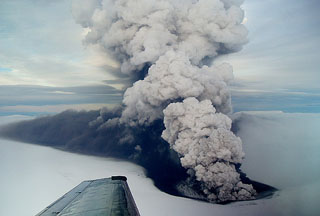Report on Grimsvotn (Iceland) — 5 January-11 January 2022
Smithsonian Institution / US Geological Survey
Weekly Volcanic Activity Report, 5 January-11 January 2022
Managing Editor: Sally Sennert.
Please cite this report as:
Global Volcanism Program, 2022. Report on Grimsvotn (Iceland) (Sennert, S, ed.). Weekly Volcanic Activity Report, 5 January-11 January 2022. Smithsonian Institution and US Geological Survey.
Grimsvotn
Iceland
64.416°N, 17.316°W; summit elev. 1719 m
All times are local (unless otherwise noted)
The Icelandic Meteorological Office (IMO) lowered the Aviation Color Code for Grímsvötn to Green on 12 January, noting that seismicity had returned to normal levels with a few earthquakes detected over the previous few weeks. The caldera had deepened during the jökulhlaup (glacial outburst flood) that had occurred during November and December 2021, though IMO noted that it was difficult to characterize the current status of the caldera and the level of the geothermal activity.
Geological Summary. Grímsvötn, Iceland's most frequently active volcano in recent history, lies largely beneath the vast Vatnajökull icecap. The caldera lake is covered by a 200-m-thick ice shelf, and only the southern rim of the 6 x 8 km caldera is exposed. The geothermal area in the caldera causes frequent jökulhlaups (glacier outburst floods) when melting raises the water level high enough to lift its ice dam. Long NE-SW-trending fissure systems extend from the central volcano. The most prominent of these is the noted Laki (Skaftar) fissure, which extends to the SW and produced the world's largest known historical lava flow in 1783. The 15 km3 basaltic Laki lavas were erupted over 7 months from a 27-km-long fissure system. Extensive crop damage and livestock losses caused a severe famine that resulted in the loss of one-fifth of the population of Iceland.

